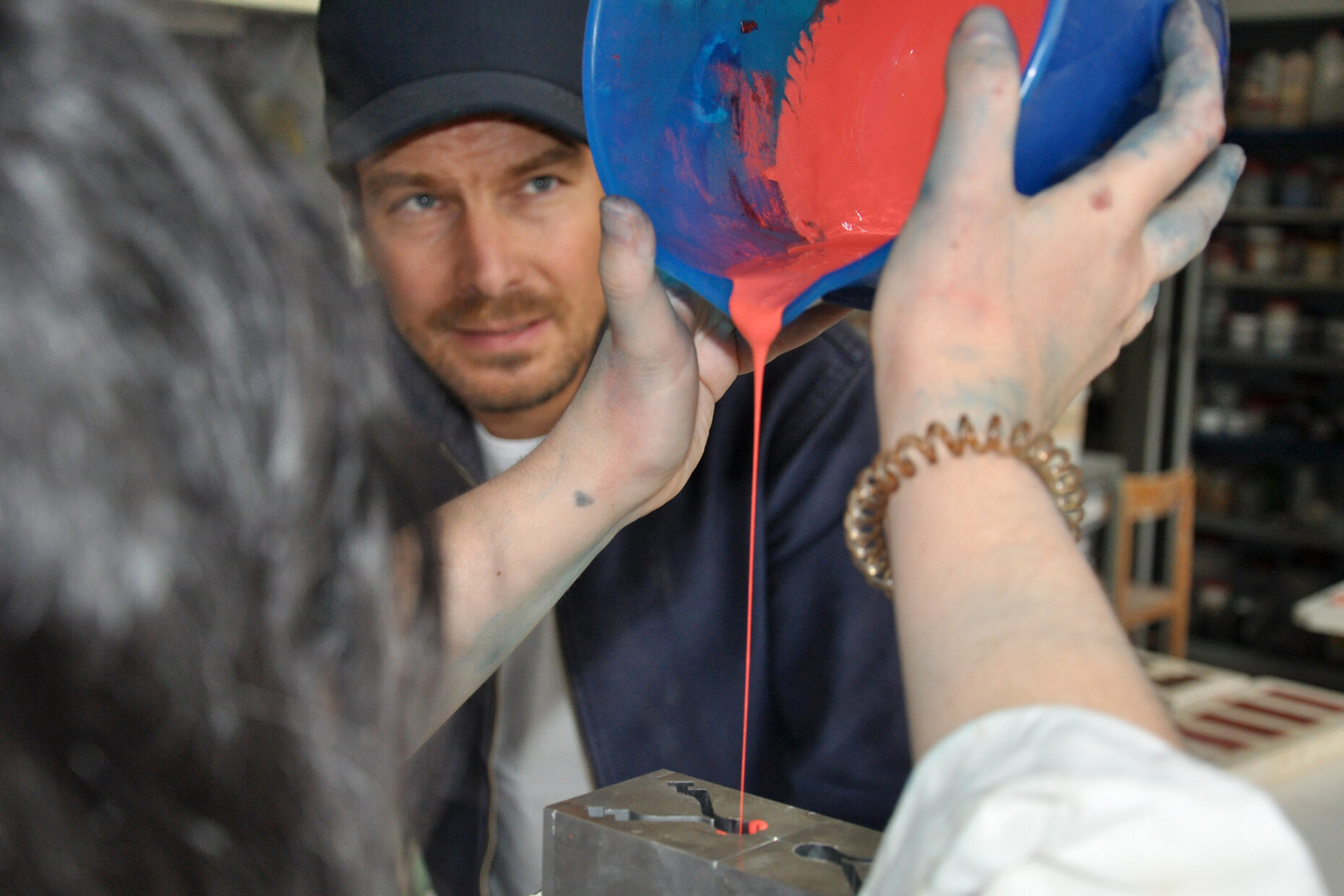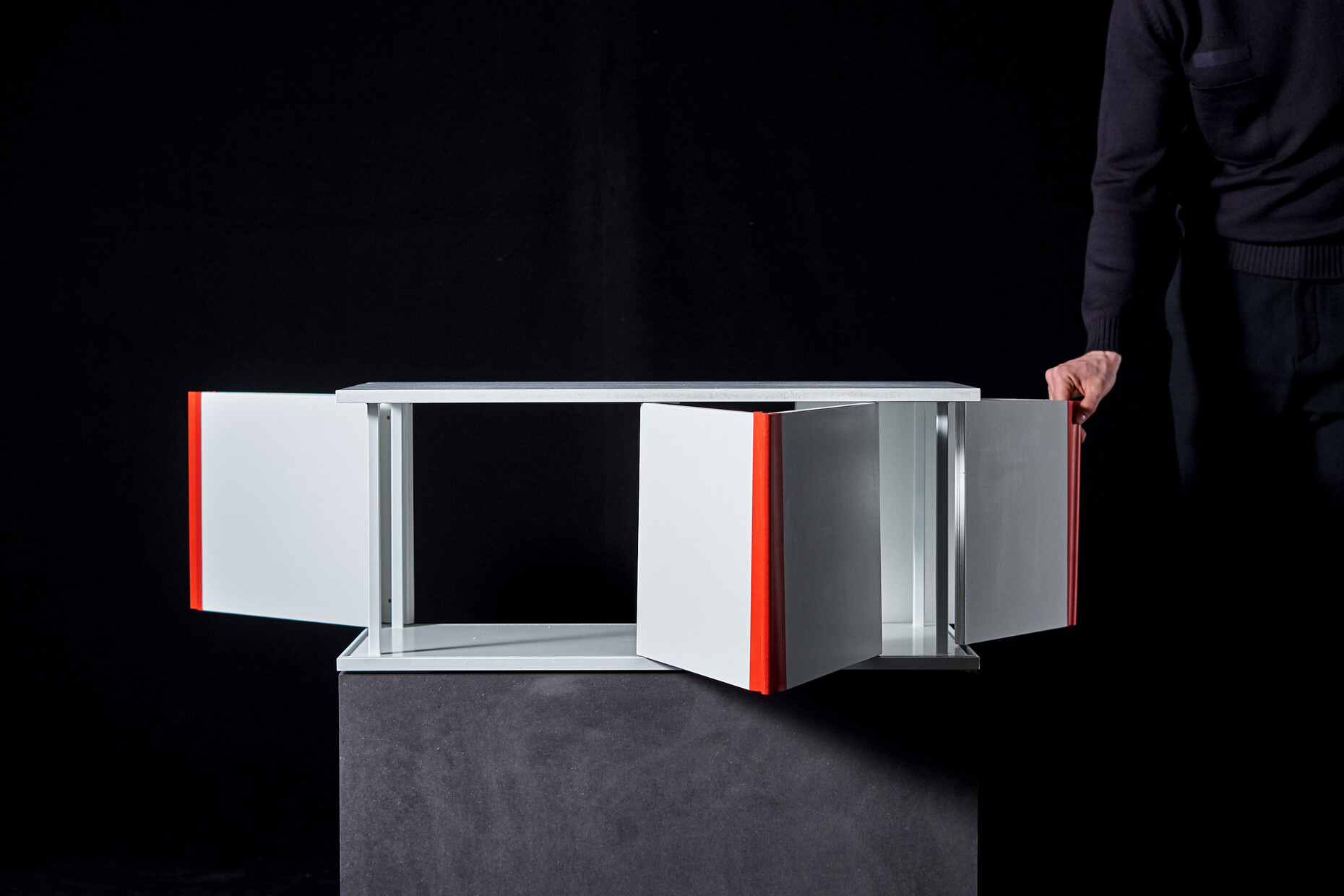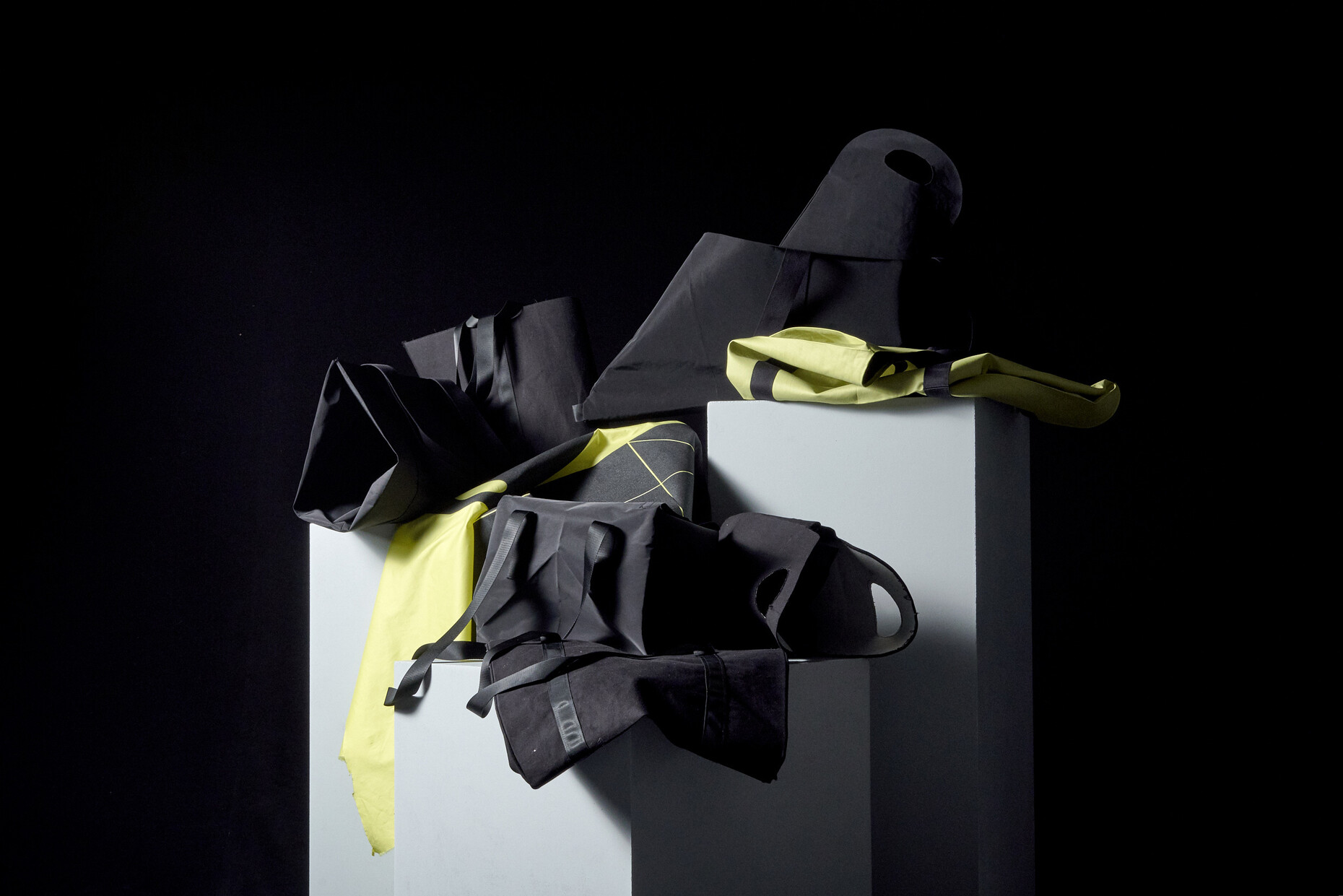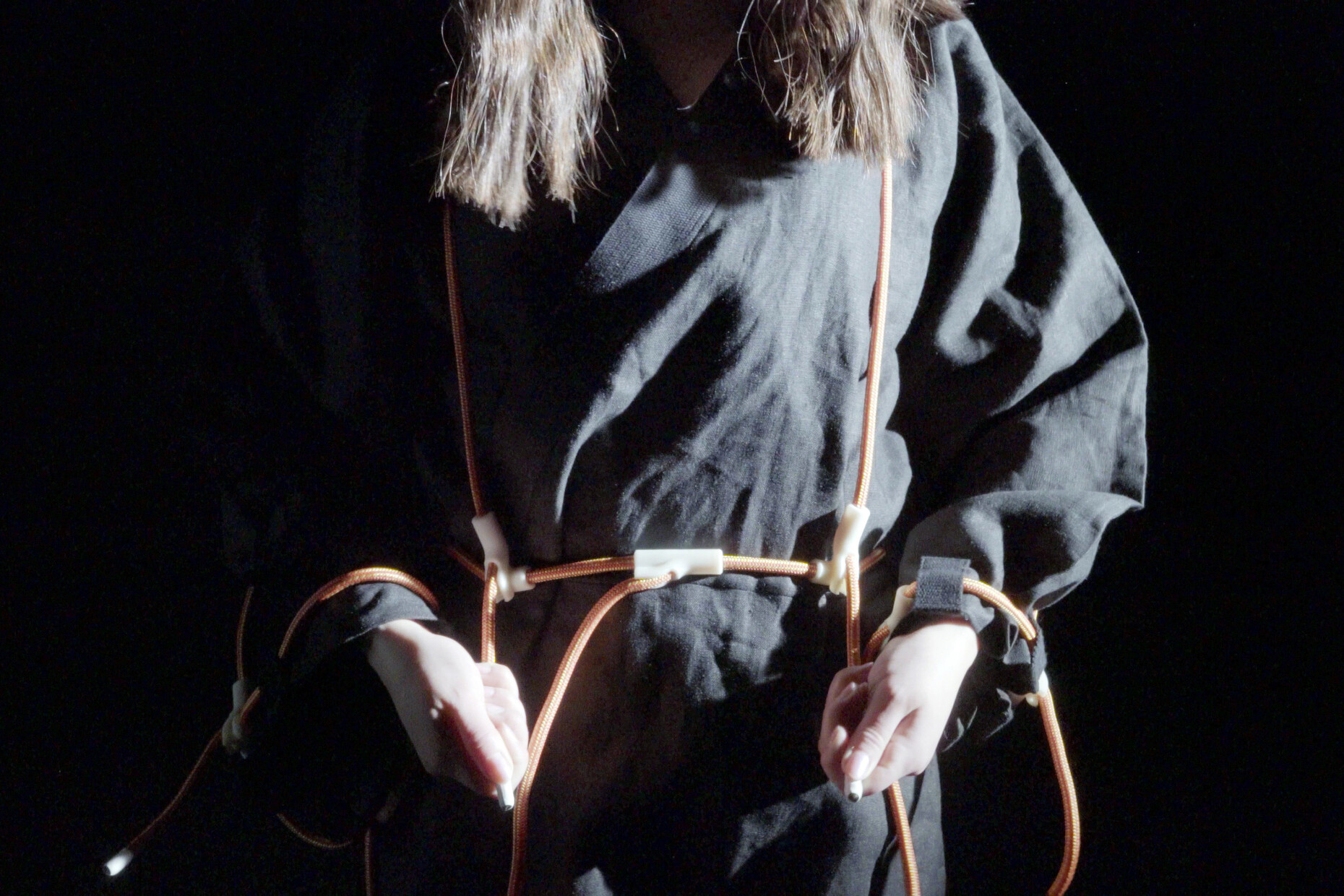SALONE DEL MOBILE 2019
Good Connections
Joint projects involving design students and manufacturers usually lead to exciting prospects for both sides involved. Young designers benefit from the manufacturing experience they encounter, which takes them beyond the quality level associated with making prototypes. Companies can draw on fresh ways of thinking that potentially persuade them to go down paths untrodden. At the University of Applied Arts Vienna, last winter semester Stefan Diez persuaded the Blum corporation to team up with his students. Since spring 2018 the Munich-based designer has been Professor of Industrial Design here in Vienna. In the wake of a project with Zumtobel, the collaboration with the Austrian fittings maker is now the second joint venture of this kind on which Diez’s class has embarked.
“It’s really worthwhile concerning yourself with these small unobtrusive things,” comments Stefan Diez when touring the uni workshops with us. “Because if you even change the one or other detail of a customary object, at times with fittings and connectors you might change the whole thing.” Manufacturers tend to stay for a long time lodged with their customary product lines. While the fold-out, hinge and drawer systems for furniture – and Blum is an acknowledged specialist maker of them – now look more refined than in the past. However, product development and its innovations are mainly limited to making fittings increasingly invisible. The semester project on “Fittings and Joints” went much further: What if, for example, you completely rethink the point of contact between the cupboard door and the body of the cupboard? Which role do fittings play in architecture and fashion? What methods from completely different areas can perhaps be brought to bear?
One of the students, Nina Melbinger, developed a combination of hinge and handle, for example. For her “Rio” product she relied on almost all the different workshops the university has to offer: starting with plaster molding and the metal-working unit to wood processing and lacquering. She molds the actual invention from red silicone. Thanks to the new system and a door that runs on a rail, the cupboard can be opened from both sides.
“In this project, students have the opportunity to venture into the subject of product development and engineering and come into contact with many manufacturing methods and materials that most students have known only from theory until now,” Diez reports. While the one or other product is more technical in nature, such as Philomena Strack’s folding/slot-in shelf system “Flip Shelving System”, other designers-to-be such as Jakob Niemann opt for an almost poetic approach. For “Timber to tree”, he inverted the manufacturing process for wooden boards: His bench stands on legs that are aligned exactly to the angles of the knotholes that have been drilled clean, and the seating thus emphasizes its prior existence as a tree. (mh)
At the coming Milan Design Week a total of 12 products from the senior years as well as several smaller items from the sophomore year will go on display. Stefan Diez is happy about the enthusiasm of the students, with which they bring the quality of the objects within a few weeks to a whole new level on the occasion of the exhibition. “After 4 months of a semester project one is often satisfied with a good concept, a mock-up and a photorealistic rendering. To make the parts usable for our exhibition, some really good ideas have emerged especially on the last meters.”
“Fittings and Joints” is on show from April 9-14, 2019 in Zona Tortona: Studio, Via Novi 2, 20144 Milan; Tues. – Sat. 10 a.m. – 8 p.m., Sun. 10 a.m. – 2 p.m.


























